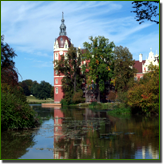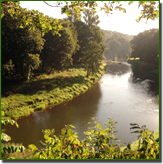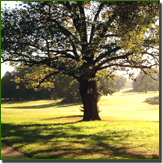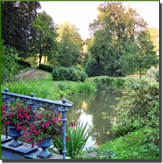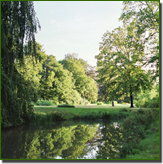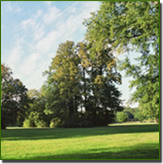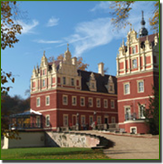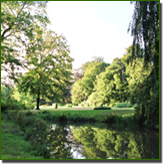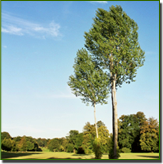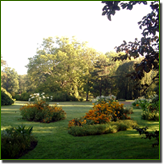The Fürst-Pückler Landscape Park
Garden Art without Borders
The river Neisse runs through one of the most exquisite English gardens in Europe a few miles north of Görlitz. Its creator, the Prince of Pückler-Muskau (1785-1871) took the idyllic scenery on the rolling banks of the Neisse river as a source of inspiration, and, in 1811, he began establishing a garden kingdom of a considerable magnitude. The park covers an area of approx. 1.4 square miles. The German part comprises the Schlosspark (Castle park), the Badepark (Spa park) and the Bergpark (Hill park). Its Polish part consists of the Unterpark (Lower park), the Arboretum and the Braunsdorf fields. Its appearance was shaped mainly by the ideas of the Prince of Pückler-Muskau and the pursuing and conserving measures of his successors, Prince Frederic of the Netherlands and the Counts of Arnim.
The Park and its Creator
"Had you only 150,000 Thalers, I would marry you again without hesitation."Hermann Prince von Pückler Muskau (1785-1871) inherited the Muskau Lordship in Upper Lusatia in 1811. He soon started reshaping the Neisse valley and the adjacent hills to a masterpiece of idealized landscapes. Although the project bankrupted him, it could be completed by wealthy successors.
A new word had to be coined to describe the scope of Prince Pücklers passion for parks: Parkomania. His and the money of his wife Lucie melted away in his hands. Both filed for divorce so that Prince Pückler could court a new wealthy bride. This destiny of his took him to England. However, the lore of his intentions preceded him, and he could not find a bride.
The English gardens he visited left a deep impression on him. He recorded his new findings in the area of landscape gardening and his ideas for the Muskau Park in the epochal treatise Andeutungen über Landschaftsgärtnerei (Hints on Landscape Gardening, 1834). Pückler soon became a sought-after advisor when his garden projects developed so splendidly. However, facing significant financial straits, he was forced to sell the Muskau lordship in 1845. He and his wife Lucie moved back to his heritage, Branitz castle near the town of Cottbus, where he - of course! - reshaped the grounds to an English garden.
A blessing in disguise: the succeeding owners of Muskau completed and conserved Pückler's creation until World War II. The park was divided by the new German-Polish border in 1945, and the Count of Arnim-Muskau was expropriated.
The value of this park, however, was not disregarded, and both countries endeavoured to maintain professional care. The cooperation between the German and Polish park administrations reached its peak in the 1990ies. The joint project soon became a showcase of international monument preservation. In 2004, the park was listed as a UNESCO World Heritage Site.
Its continued restoration and maintenance works allow for new discoveries with every repeated visit. Along its paths, you will wander through ever-changing landscape sceneries - a delightful mesh of sightlines indeed! Pückler shaped these landscapes through the artful planting of groves, the careful placement of buildings and, above all, through his fanciful and imaginative way of integrating the charming sloping terraces of the Neisse valley. The park itself is a hub for paths into the cultural landscape of Lusatia and its vast number of landmarks providing pleasant distraction even for extended stays.
Source (translated): www.muskauer-park.de



